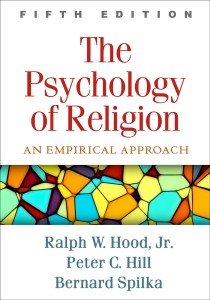Seeing Through the Glass:
A Review of Keith Harper's Through a Glass Darkly
Keith Harper's Through a Glass Darkly: Contested Notions of Baptist Identity (University of Alabama Press, 2012) is not merely a scholarly examination of Baptist history; it's a compelling narrative that reveals the inherent tensions and contradictions embedded within the very fabric of Baptist identity. Harper meticulously deconstructs the monolithic image often associated with Baptist traditions, unveiling a complex tapestry woven from diverse theological perspectives, social contexts, and power dynamics. This meticulously researched and elegantly written work offers a crucial corrective to simplistic understandings of Baptist history, providing invaluable insights into the ongoing struggles for self-definition within Baptist denominations.
The book's strength lies in its refusal to present a singular, unified narrative of Baptists. Instead, Harper masterfully traces the evolution of Baptist identity through a series of interconnected case studies, focusing primarily on the American South but drawing parallels to global Baptist movements. He effectively challenges the traditional narrative of a seamless progression from persecuted separatist groups to a dominant religious force. Instead, he exposes the persistent internal conflicts and external pressures that shaped—and continue to shape—Baptist self-perception.
Harper's analysis delves into central themes such as the role of the Bible in shaping Baptist theology, the evolving understanding of church governance (congregationalism versus hierarchical structures), and the complex relationship between Baptists and the broader social and political landscape. He skillfully navigates the treacherous terrain of race and class, demonstrating how these factors profoundly influenced the development of distinct Baptist traditions. The impact of slavery on Southern Baptist identity receives particular attention, highlighting the inherent contradictions between the professed values of individual liberty and the acceptance of a system predicated on the brutal subjugation of African Americans. This isn't a simple condemnation but rather a nuanced exploration of how theological interpretations were used to both justify and resist slavery, leaving a legacy that continues to resonate today.
One of the book's most significant contributions is its exploration of the evolving understanding of "Baptist distinctives." Harper effectively dismantles the notion of a fixed set of beliefs and practices that define all Baptists. He demonstrates how certain tenets, such as believers' baptism, congregational autonomy, and the priesthood of all believers, have been interpreted and reinterpreted across various historical contexts and social groups. This fluidity, often perceived as a weakness, is presented by Harper as a source of both strength and vulnerability, a testament to the dynamic nature of religious traditions.
The book's structure, while chronological in its broad strokes, allows for thematic depth. Harper seamlessly weaves together individual stories, denominational developments, and wider societal trends, creating a rich and engaging narrative. He masterfully utilizes primary source materials—letters, sermons, denominational minutes, and personal accounts—to bring the historical actors to life, allowing readers to grapple with the complexities of their beliefs and actions.
While the book primarily focuses on the American experience, Harper cleverly draws parallels to Baptist movements in other parts of the world, demonstrating the global reach and diverse manifestations of Baptist identity. This comparative perspective enhances the book's analytical power, highlighting the inherent adaptability and resilience of Baptist traditions while acknowledging the unique challenges faced by Baptists in diverse cultural contexts.
However, the book's strength is also its potential limitation. The sheer breadth of the subject matter means that certain aspects receive less detailed treatment than others. For example, the role of women in Baptist history, while acknowledged, could have benefited from more extensive analysis. Similarly, the growing diversity within Baptist denominations in recent decades could have been explored more fully, especially concerning the rise of progressive Baptist movements.
Despite these minor criticisms, Through a Glass Darkly remains a seminal work in Baptist studies. Harper's insightful analysis, meticulous scholarship, and engaging prose make this book essential reading for anyone interested in understanding the complexities of Baptist history, theology, and identity. It is a book that challenges assumptions, provokes thought, and ultimately leaves the reader with a deeper appreciation for the multifaceted nature of this influential religious tradition. It is a must-read for students, scholars, and anyone seeking a more nuanced understanding of the historical and ongoing debates that have shaped the Baptist world. Harper's contribution is not just to Baptist history but to the broader study of religious identity, demonstrating how seemingly unified traditions are constantly shaped and reshaped by internal conflicts and external pressures. The "glass darkly" of the title ultimately becomes a lens through which we can see Baptist history with remarkable clarity.






